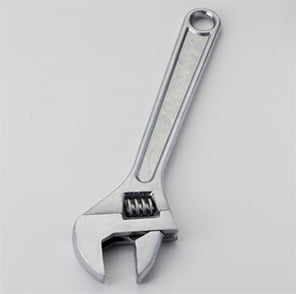
Written by Chris on March 21, 2023
Updated on: 20 July 2023
Maintaining a Portable Generator
Why you should maintain your portable generator
First of all, portable generators are expensive pieces of kit and owners will want to do all they can to ensure the longest useful life as possible. Keeping them clean after each use is an essential first step.
However, working against owners is the fact that most portable generators and the components they use, including the engines, are made in China and may not always be of the highest quality in terms of long-term durability. The engines are generally relatively small and relatively unsophisticated. Take, for example at the smallest end the diminutive WEN Super Quiet 56203i with its 79cc engine and at the upper end the mighty DuroMax XP15000E with its 713cc engine.
While propane portable generators need less maintenance than those powered by gasoline, they both need looking after to help ensure a longer useful life. And just because you may only have to use your portable generator infrequently, that does not mean you can safely ignore the maintenance schedule specified by the manufacturer or the need to run the generator’s engine often to keep it in shape. And often means at least once a month until it has warmed up properly, which will also allow the gasoline and fuel stabilizer to flow throughout the system and, in the case of electric start models, keep the battery charged up. Here we have a selection of fuel stabilizers.
Common problems and solutions – portable generators
These can generally be categorized as follows:
- Metal shavings in the oil and oil changes
- Carburetor and fuel tank plus fuel economy
- Spark plug
- Smoky exhaust
- No-flat wheels
Although it is usual for factories to test each generator engine, the procedure is short after which the oil is drained before shipment. Some oil residues may be evident either on the generator or in the packing, though this is not necessarily an indication that the generator has been used before as some buyers suspect.
Once you have filled your new unit with oil and have started it up for the first time it is common in the early days to find metal shavings in the oil. This is because at the beginning of an engine’s life care is needed to promote a bedding-in process in which friction of materially different parts moving continuously at high rate allow the piston rings to achieve the best seal against the cylinder walls. A thin layer of lubricating oil separating the parts is the sole means of preventing the increasingly hot metals from fusing together, and it is normal for tiny metal shavings to appear in the oil as the process of bedding-in continues.
But if not removed these shavings can cause damaging scratches, which will diminish the performance and shorten the life of the engine. So it’s important for you to change the oil often when the engine is being run-in. Many owners recommend the use of a magnetic dipstick, instead of the plastic one normally supplied, to collect as much of the shavings as possible.
With a brand-new generator running for the first time you should keep checking the magnetic dipstick in its first few hours of use for any sign of shavings. Whatever you find, change the oil after a maximum of 5 hours. Oil is relatively inexpensive compared to the price of the generator, and by playing safe you will reduce the chances of engine problems later on.
What kind of oil should you use in a portable generator?
Not all manufacturers provide a bottle of oil in the box. But most recommend SAE10W-30 automotive oil for its ability to operate well in a variety of temperatures and climatic conditions. SAE5W-30 is recommended if you will be using the generator in below freezing conditions.
As to whether you should use wholly synthetic oil, not the blend, rather than conventional oil the answer is probably yes, but only after the engine has had time to bed-in. The reason for this is that conventional oil does a better job of capturing the shavings.
Thereafter, though conventional oil can provide satisfactory lubrication, synthetic oil will provide better protection for the engine because it contains fewer impurities, which makes it more resistant to chemical breakdown. As a result, it has a longer life which goes some way to compensate for its higher cost.
How often should you change a portable generator’s oil
The specifications on first use vary from manufacturer to manufacturer. But to be safe and as mentioned above, change it after the first 5 hours or 1 month, whichever comes sooner. And always change the oil when the engine is warm.
After the break-in has been completed, all manufacturers say you should change the oil more often if the generator is being used in adverse or difficult conditions. For example, Champion indicate a change after every 50 hours or every season in hard conditions, and every 100 hours or every season in normal conditions. WEN, on the other hand, say to change the oil every 25 hours in dusty conditions or operating under heavy load, otherwise as necessary.
Problems with a portable generator’s carburetor, fuel tank, and fuel economy
These are fairly common problems for which the main cause is usually stale/bad fuel as it deteriorates over time if not kept in an airtight environment. The use of a fuel stabilizer is often highly recommended to help prevent the fuel from going bad for 12 months or so, and in some cases longer. Keeping your store of gasoline in the right type of container is also important both from the perspective of keeping it fresh but also from the safety angle too.
An unexpected fall in fuel economy can often be linked to misuse of the choke or a dirty air filter. Manufacturers generally advise cleaning the air filter with liquid detergent and water after between 25 and 50 hours of use and replacing it at around the 200 hour mark.
Problems with spark plugs
Owners have sometimes run into problems with the factory-supplied spark plug. Occasionally when unpacking a new unit owners have also discovered a broken spark plug and assumed the damage must have occurred on its long journey from overseas or during the delivery process. But besides the breakage problem, a lot of portable generators come fitted with a Chinese Torch spark plug. Although the evidence appears to be mainly based on hearsay, a lot of owners claim the Torch spark plug is of inferior quality and choose to substitute it immediately with an NGK variant, after which they say performance improved significantly.
Regular examination of the spark plug will also reveal how well the engine is running. Hard starting and misfiring can often be associated with a dirty spark plug having built up black soot-like carbon deposits caused by too rich a mixture, perhaps by overuse of the choke. Where necessary, the plug can be cleaned carefully with a wire brush and then the gap reset. Other suggestions include the use of a small blowtorch to burn off the deposits.
A problem of a smoky exhaust
A whitish and odorless emission will probably have been caused by condensation within the exhaust pipe and is quite normal, for example when first starting the generator early in the morning when you may well see water droplets falling from the exhaust. This type of smoke should begin to disappear as the engine begins to warm up.
If the color is a mix between whitish and bluish the cause could be overfilling the oil resulting in some of the excess finding its way onto parts of the engine that become extremely hot when operating. Too much oil in the sump can also end up in the cylinder and burn up together with gasoline.
Other more serious conditions include the possibility of a blown head gasket. When this happens, the engine will overheat and lose compression resulting in a loss of power.
Smoke can also be caused by a dirty air filter. It’s normally a simple matter of taking the filter out and washing it as we have outlined above.
However, if the generator continues to emit smoke you would do well to immediately get expert advice on the cause and possible solution.
Problems with No-flat wheels and possible solutions
In our article we go into some detail about the type of no-flat wheels usually supplied when they come as a standard fitting with portable generators. While not everyone is unhappy with this type of wheel, owners often report problems relating to the development of flat spots, which cannot be fixed, when the generator is left in one place for several months. And it’s not unusual for these to be stored away between seasons. Other problems include easily breaking and being no good for moving over anything other than a hard surface.
We highlight some alternatives as a possible solution to avoiding some or any of these problems.
Some owners have got round the problem of flat spots by propping the generator up off the ground, thereby taking the weight of the wheels while the unit is in storage.
